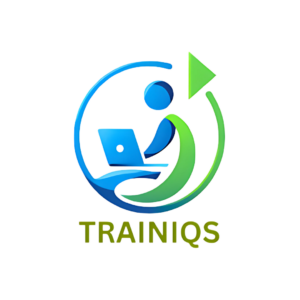Course Details
Gain proficiency in SAP FICO with our expert instructors
- 100 + Lessons
- 100 + Hours
- Overview
- Career Path
- Eligibility
- Content
- Interview Questions
Discover SAP FICO, an essential tool for mastering financial accounting and controlling within organizations. This comprehensive solution empowers professionals to manage financial transactions, optimize reporting, and gain insights for informed decision-making. Enroll today to unlock the skills needed to excel in financial management and elevate your career.
Entry-Level: Start as an SAP FICO Associate or Junior Consultant.
- Responsibilities: Assist in SAP FICO implementation and basic financial tasks.
- Skills Needed: Basic understanding of SAP FICO modules and accounting principles.
Mid-Level: Progress to roles like SAP FICO Consultant or Analyst.
- Responsibilities: Configure SAP FICO, support end-users, and analyze financial data.
- Skills Needed: Strong SAP FICO knowledge, project experience, and analytical skills.
Senior-Level: Advance to positions such as SAP FICO Manager or Senior Consultant.
- Responsibilities: Lead SAP FICO projects, provide strategic guidance, and optimize financial processes.
- Skills Needed: Extensive SAP FICO expertise, leadership abilities, and business acumen.
Specialized Roles: Explore opportunities like SAP FICO Architect, Trainer, or Auditor.
- Responsibilities: Design solutions, train others, or ensure compliance within SAP FICO.
Executive Level: Reach top positions such as CFO or Director of Financial Systems.
- Responsibilities: Utilize SAP FICO insights for strategic decision-making and oversee financial systems.
Educational Background: A background in finance, accounting, business administration, or related fields is advantageous but not always mandatory.
Professional Experience: While not always required, practical experience in financial roles or familiarity with accounting principles can facilitate understanding.
Technical Proficiency: Basic knowledge of software applications and business processes is helpful for comprehending SAP FICO functionalities.
Motivation: A strong interest in financial management, ERP systems, and a commitment to enhancing skills in SAP FICO are essential.
Introduction to SAP ERP and SAP FICO
- Overview of SAP ERP system and its modules
- Introduction to SAP FICO (Financial Accounting and Controlling)
Financial Accounting (FI)
- General Ledger Accounting (G/L)
- Accounts Payable (AP) and Accounts Receivable (AR)
- Asset Accounting (AA)
- Bank Accounting (BA)
- Financial Closing Procedures
Controlling (CO)
- Cost Element Accounting
- Cost Center Accounting
- Internal Orders
- Profit Center Accounting
- Product Costing
- Profitability Analysis (COPA)
Integration with Other SAP Modules
- Integration with Materials Management (MM)
- Integration with Sales and Distribution (SD)
- Integration with Production Planning (PP)
Reporting and Analysis
- Financial Reporting using SAP FICO
- Key Financial Reports (Balance Sheet, Profit and Loss Statement)
- Financial Analysis and Decision Support
SAP FICO Configuration and Customization
- Overview of SAP FICO Configuration
- Customizing Financial Accounting and Controlling Modules
- Master Data Management in SAP FICO
SAP FICO Project Lifecycle
- SAP FICO Implementation Methodology
- Project Planning and Execution
- Support and Maintenance
Advanced Topics
- New Features and Updates in SAP FICO
- Advanced Financial Management Techniques
- Case Studies and Practical Applications
Practical Exercises and Hands-on Labs
- Hands-on experience with SAP FICO software
- Practical exercises to reinforce learning
Certification Preparation (Optional)
- Preparation for SAP Certified Application Associate – SAP S/4HANA for Financial Accounting Associates (C_TS4FI_2020) or similar certifications
What is SAP FICO?
- SAP FICO stands for Financial Accounting (FI) and Controlling (CO). It is a core module in SAP ERP that facilitates financial management and reporting.
What are the key components of SAP FI?
- The key components of SAP FI include General Ledger Accounting, Accounts Payable, Accounts Receivable, Asset Accounting, and Bank Accounting.
What are the key components of SAP CO?
- The key components of SAP CO include Cost Element Accounting, Cost Center Accounting, Internal Orders, Profit Center Accounting, Product Costing, and Profitability Analysis (COPA).
Explain the integration between SAP FI and SAP CO.
- SAP FI and CO are tightly integrated modules in SAP ERP. FI provides financial accounting data, which CO uses for cost controlling and internal reporting purposes.
What is a Chart of Accounts in SAP FICO?
- A Chart of Accounts (CoA) is a list of all General Ledger accounts used by an organization. It is used to record transactions and prepare financial statements.
What is the purpose of Asset Accounting in SAP FI?
- Asset Accounting in SAP FI manages and tracks an organization’s fixed assets. It records acquisition, depreciation, retirement, and valuation of assets.
What is Vendor Account Group in SAP FI?
- Vendor Account Group categorizes vendors based on business requirements. It defines fields for vendor master data and controls data entry.
Explain Automatic Payment Program (APP) in SAP FI.
- APP in SAP FI automates the process of outgoing payments to vendors. It generates payment documents based on predefined criteria and reduces manual effort.
What is Cost Center Accounting in SAP CO?
- Cost Center Accounting tracks costs and revenues by cost centers. It helps analyze costs incurred by departments or functional areas within an organization.
What is Internal Orders in SAP CO?
- Internal Orders in SAP CO are used for short-term projects or activities. They capture costs and revenues related to specific tasks or events.
What is Profit Center Accounting in SAP CO?
- Profit Center Accounting in SAP CO enables organizations to analyze profit and loss for segments or business units. It facilitates internal reporting and performance analysis.
What is Product Costing in SAP CO?
- Product Costing in SAP CO calculates and analyzes the cost of goods manufactured or services rendered. It helps determine the cost of products for pricing and profitability analysis.
Explain Accounts Receivable (AR) and Accounts Payable (AP) integration with SAP FI.
- Accounts Receivable (AR) manages incoming payments from customers, while Accounts Payable (AP) handles outgoing payments to vendors. Both modules integrate with SAP FI for financial accounting and reporting.
What is the purpose of a Fiscal Year Variant in SAP FI?
- A Fiscal Year Variant defines the fiscal periods and their length for financial accounting purposes. It determines how financial data is stored and reported within SAP FI.
What is the difference between Financial Accounting (FI) and Controlling (CO) in SAP?
- FI focuses on external reporting and financial transactions, such as General Ledger Accounting and Accounts Payable/Receivable. CO focuses on internal reporting and controlling activities, such as Cost Center Accounting and Product Costing.
Explain the concept of Posting Periods in SAP FI.
- Posting Periods define the periods in which financial transactions can be posted in SAP FI. They are used to control the timing of posting and closing activities.
How does SAP FICO support financial reporting?
- SAP FICO supports financial reporting by providing real-time data integration, accurate financial statements, and analysis through its reporting tools. It ensures compliance with accounting standards and regulatory requirements.
What are the different types of Financial Statements generated in SAP FICO?
- The primary financial statements generated in SAP FICO include the Balance Sheet, Profit and Loss Statement (Income Statement), and Cash Flow Statement. These statements provide insights into an organization’s financial performance and position.
What is Asset Under Construction (AUC) in SAP FI-AA?
- AUC in SAP FI-AA represents assets that are under construction or in progress. It allows tracking of costs incurred during the construction phase before the asset is completed and capitalized.
How can you configure Automatic Clearing in SAP FICO?
- Automatic Clearing in SAP FICO can be configured through settings in the Clearing Accounts and Payment Program. It automates the process of matching and clearing open items between customers, vendors, and GL accounts.

Course Details:
Course Fee:
20000 INR
Instructor
Siva
Duration
4 Months
Batches
Morning and Evening
Language:
English, Telugu
Mode
Online, Offline, Weekend
